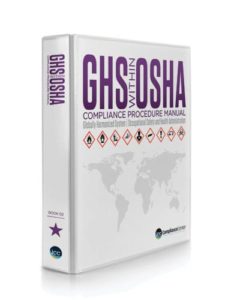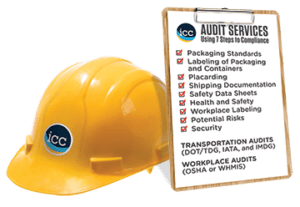If improperly stored, aerosols can cause serious issues in regards to Occupational Health and Safety. Improper storage can also lead to possible dangers to your warehouse/infrastructure if an incident were to happen. Aerosols can be a bit mystifying when trying to decipher from either the standards related to the manufacturing of cans, storage requirements, or to the proper classification of the actual finished product. Feel free to read ICC’s Karri Ishmael’s blog on the classification of aerosols.
This is a brief overview of what the National Fire Code of Canada (NFCC) is regarding aerosols. It is key to always check with any local municipal storage requirement for dangerous goods as well. The NFCC classifies aerosols similar to the National Fire Protection Association (NFPA) by breaking them down into three levels. Level 3 aerosols are the most dangerous, and level 1 is considered the least hazardous.
- Level 1 Aerosol – Less than 25% by weight of water-miscible or non-miscible flammable base product. (This is also known in NFCC as a Class III commodity).
- Level 2 Aerosol – 25 to 100% by weight of water-miscible flammable base product or 25 to 55% of non-water miscible flammable or combustible base product.
- Level 3 Aerosol – Greater than 55% by weight of non-water miscible flammable base product.
Based on these classifications, the NFCC will apply certain restrictions from maximum allowance in an individual storage area that either has a fire suppression system or not (sprinklered or unsprinkleled), plus fire separation from other products and pile/pallets size and storage heights.
Please note an individual storage area (ISA) is defined in the NFCC as “an area occupied by piles, bin boxes, racks or shelves, including subsidiary aisles providing access to the stored products which is separated from adjacent storage by aisles not less than 2.4 m in width”.
The NFCC recognizes three types of storage for aerosols. The aerosol can you have will be able to tell you how much you can store in your individual storage area.
- The first storage type is titled “None.” If you have an area in which the 2.4m separation is not possible. The second is,
- Type A storage. Requirements consist of one or more “individual storage areas” separated from the remainder of the building by at least a chain-link fence barrier (3.8 mm steel wire, 50 mm diamond mesh minimum). Or, other non-combustible partitions capable of withstanding rocketing cans. It must extend to the underside of the roof deck or to a ceiling that is also strong enough to withstand such abuse. The third is,
- Type B storage. Storage consists of one or more “individual storage areas” separated from the remainder of the building by non-combustible partitions, having at least a 1-hour fire-resistance rating, and are capable of withstanding the impact of rocketing cans. Walls must extend to the underside of the roof deck or to a ceiling which is also of similar construction and strong enough to withstand such abuse.
Level 1 aerosol products shall be stored as a Class III commodities, in both palletized and rack storage, in conformance with the NFCC, see table below.
|
Product Classification |
Type of Dedicated Area Required | |||
| Unsprinklered Building | Sprinkled Building | |||
| Maximum size of storage area, m2 | Height of Storage, m | Maximum size of storage area, m2 | Height of Storage, m | |
| Class III commodities | 250 | 4.5 | 1000 | 9.0 |
Level 2 and 3 aerosol products shall conform to the following maximum quantities table based on storage type available at your facilities.
|
Product Classification |
Type of Dedicated Area Required | |||||
| Unsprinklered Building | Sprinkled Building | |||||
| None | A | B | None | A | B | |
| Level 2 and 3 | 1000 | 5000 | 10000 | 10000 | 50000 | No limit |
Again, if you ever require additional information, I recommend reviewing your national and local fire and building codes. In addition, any general questions, please feel free to contact ICC The Compliance Center at 1-888-442-9628 (U.S.) or 1-888-977-4834 (Canada).
Stay up to date and sign up for our newsletter!
We have all the products, services and training you need to ensure your staff is properly trained and informed.
 NFPA Signs |
 OSHA General Industry Publications |
 OSHA Plant Audits & Transport Audit Services |







 ICC USA
ICC USA ICC Canada
ICC Canada